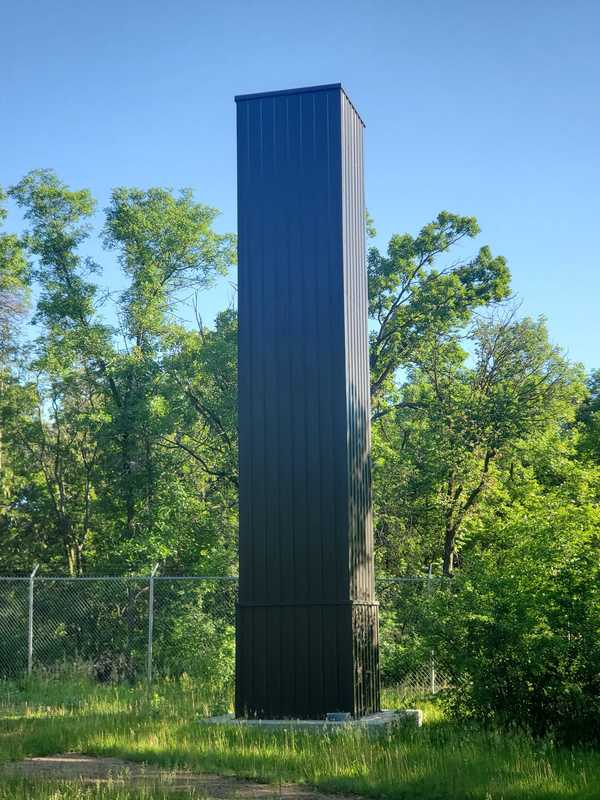Next time you find yourself walking the park paths alongside the McFeetor’s Heavy Horse Centre, make sure you look for the Zoo’s artificial “chimney”! In 2018, we partnered with the Manitoba Chimney Swift Initiative and the Province of Manitoba to install this artificial chimney as a nesting and roosting habitat for a special species of bird - chimney swifts.
Chimney swifts are aerial insectivores (birds that eat insects while flying) that are known for their extravagant entrances into chimneys at night to roost. Their high-pitched twittering calls can often be heard coming from the sky. Historically, chimney swifts nested in tree cavities and hollows, but more recently, chimneys and other human-made structures have become their primary nesting sites.
Chimney swifts are currently listed as a Threatened species in Canada, largely due to habitat loss. As chimneys become less common in modern buildings and old structures with chimneys are torn down, the swifts are slowly losing this nesting and roosting habitat.

We have installed a remote camera monitoring system to view the inside of the chimney without disturbing the nesting birds using it. Through this camera technology, and with volunteer monitors, we are happy to report that a nesting pair of chimney swifts have used the chimney to raise their young for the past four years!
In the video below, you can see the chimney swift family that used the Park's artificial chimney last year.
The fledglings are using their specialized feet with sharp, curved claws to cling to the vertical walls of the chimney. Chimney swifts spend the majority of their time flying and cannot perch like other birds on branches or horizontal surfaces. The birds need extremely strong wings to fly for such long periods of time, so the young are flapping their wings to build muscle strength so they are successful when they are old enough to leave the nest at around 30 days old.
You will also see the adult chimney swift bring food to the young. The mature bird can be identified as an adult by its longer tail feathers. Both parents incubate the eggs and participate in feeding the young.
During spring and summer evenings, you may see volunteers our watching the chimney. These volunteers are helping us monitor swifts using the chimney and contribute to a Manitoba-wide monitoring effort in collaboration with the Manitoba Chimney Swift Initiative.
If you think you may have chimney swifts nesting in your chimney or if you are interested in transforming your chimney into suitable habitat - reach out to the Manitoba Chimney Swift Initiative! There may be funding available to clean, repair, or uncap your chimney. You can contact them at www.mbchimneyswift.com, where you can also learn more about how to help this Threatened species.





